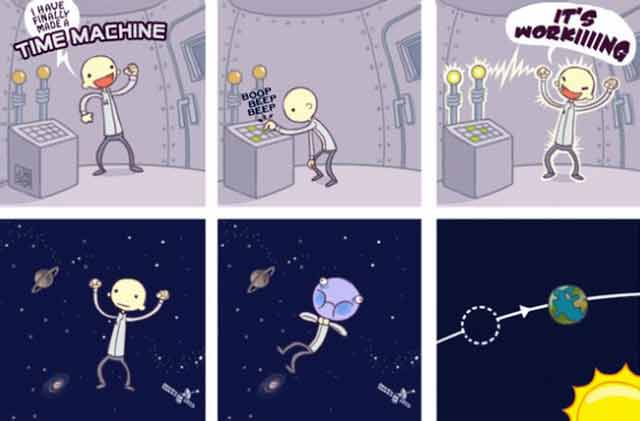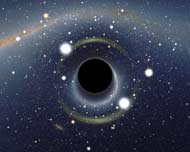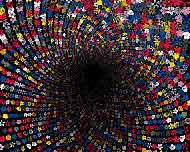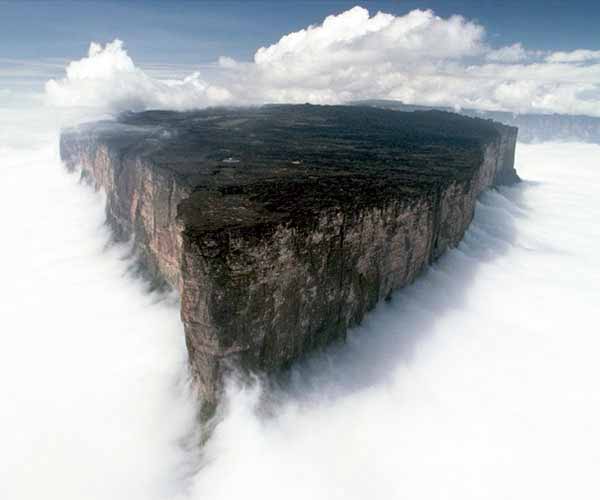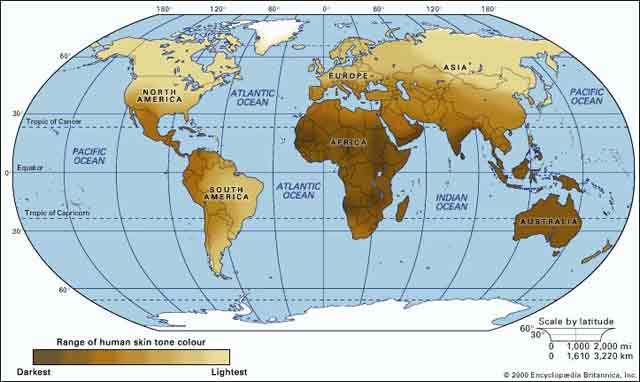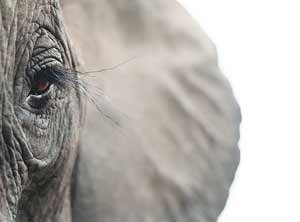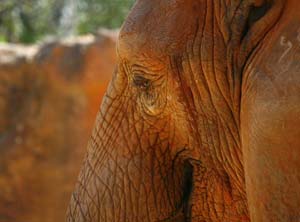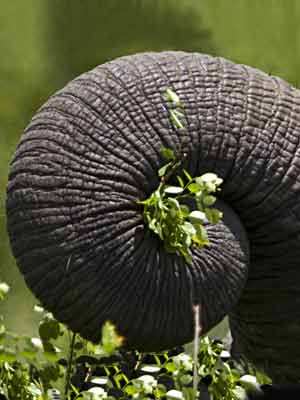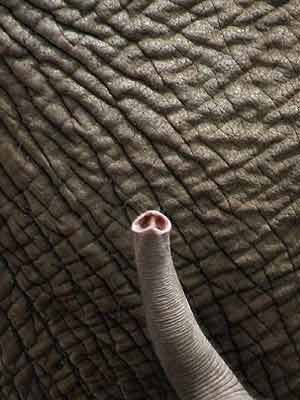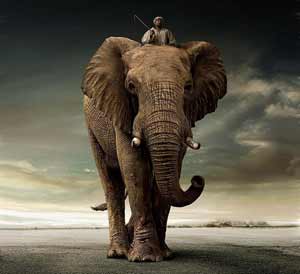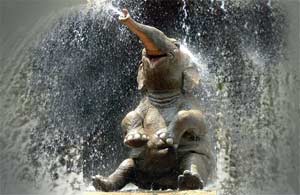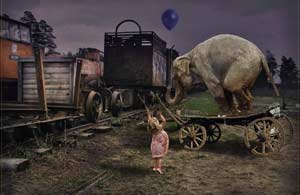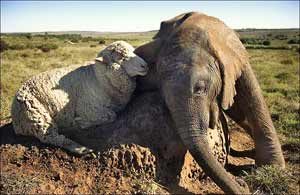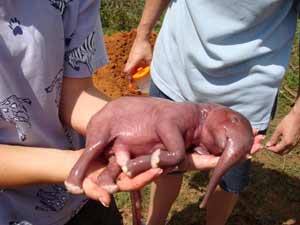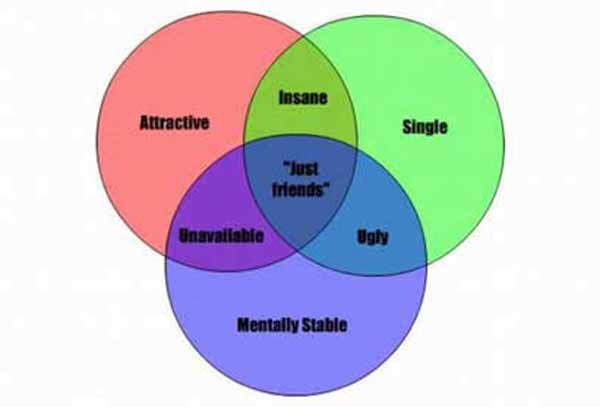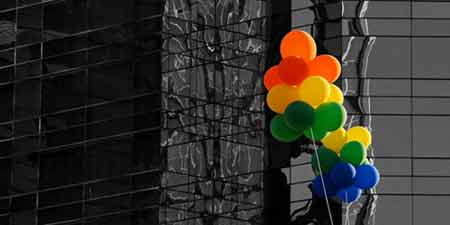Nothing Is Certain
News and Site Updates Archive 2010/07/31I myself believe that there will one day be time travel. — David Deutsch 
Theories of time travel are riddled with questions about causality and paradoxes. Compared to other fundamental concepts in modern physics, time is still not understood very well. Philosophers have been theorising about the nature of time since the era of the ancient Greek philosophers and earlier. Eternalism, also sometimes known as "block universe theory", builds on a standard method of modelling time as a dimension in physics, to give time a similar ontology to that of space. This would mean that time is just another dimension, that future events are "already there", and that there is no objective flow of time. Presentism, on the other hand, is a school of philosophy that holds that neither the future nor the past exist, and there are no non-present objects. In this view, time travel is impossible because there is no future or past to travel to. The Novikov self-consistency principle is another view of time which can result in an ontological paradox (one known as the knowledge or information paradox) where the very existence of some object or information is itself a time loop. Example: Assume a time traveller goes to Shakespeare's time with a book of all his works. Shakespeare, pressed for time, simply copies the information in the book from the future. The "free lunch" is that no one really writes the plays! Time is endlessly fascinating philosophically and endlessly frustrating on a practical level.  What would happen if the earth stopped spinning? Our planet spins at 1,667 kilometres per hour at the equator. This spin pulls the mass of water toward the equator, creating an unsightly ellipsoidal bulge and the oceans with which we are familiar. There would be a gradual change in the planet's geography as the earth slowed to a halt. As the spin stopped, the oceans would all fall back toward the poles, drowning everything north of Chicago and south of Buenos Aires, creating two massive circumpolar oceans. Wrapped around the middle of the planet would be a single equatorial mega-continent, with giant dry valleys where the old Atlantic and Pacific used to be. The immobile planet would be a perfect, if somewhat mountainous, sphere. One thing that seems to be left out is what would happen to the weather. Possibly the solar winds would strip the atmosphere because there would no longer be a magnetic field generated by a churning molten core? No tides, anyway — no surfing. No rain? Certainly no sun for half the year, so no trees. Would the moon still orbit the earth? Best to hope this never happens. One of the comments to the above article was quite interesting. I gather the author was implying a "creator" which I cannot go along with. Nevertheless, his point was interesting. He said: "If some extra-terrestrial intelligence wanted to entice planetary life forms to crawl up out of their gravitation well to look around the cosmos, a good motivation might be to hide a side of their nearest celestial body. All things considered, a non-synchronous relationship is far more likely [than the totally synchronous moon we enjoy which always keeps the same side facing the earth]. Casual observation of the lunar surface shows a multitude of lunar craters on the side we can see — evidence of many massive collisions. These collisions affected the moon’s mass, orbit and rotation. And, from the look of it, it took a long while to get it tuned precisely to its present-day state, like a clockmaker fine tuning the timing of a massive clock. It’s simply not normal. No other planet constantly faces the sun. No other moons constantly face their planets. The statistical probability of causal chaotic forces tweaking a mass body into such an orbital dynamic is beyond astronomical. Once this unique configuration was achieved, these catastrophic cosmological tweaking events appear to have spontaneously ceased, delivering a configuration which has remained stable for thousands of years." Do black holes abound? Certainly black hole theories do. What would a black hole without its event horizon reveal? That's where physics turns philosophical. Mathematics here indicate that space-time becomes infinitely curved, creating what astrophysicists call a singularity - an indication to most that a theory has broken down and a new one is needed. It's a matter of principle that singularities are mathematical objects, not physical ones. Any "hole" they suggest exists not in the fabric of the universe but in our understanding. Astrophysicists are different. They have such extraordinary faith in their theories that they believe singularities actually exist inside black holes. The likes of Roger Penrose and Stephen Hawking have even proved that singularities are inevitable in gravitational collapse. For them, removing the event horizon around a black hole raises the exciting prospect of revealing a singularity in all its naked glory. When that happens, we'll gaze at infinity. That seems bizarre. Via the New Shelton wet/dry. An alternative idea: When the density of matter reaches gargantuan proportions (more than about 1050 kilograms per cubic metre) inside a black hole, torsion manifests itself as a force that counters gravity. This prevents matter compressing indefinitely to reach infinite density, so there is no singularity. Instead, matter rebounds and starts expanding again. This resembles what happens when you compress a spring: gravity initially overcomes torsion's repulsive force and keeps compressing matter, but eventually the repulsive force gets so strong that matter stops collapsing and rebounds. Space-time inside the black hole expands to about 1.4 times its smallest size in as little as 10-46 seconds. This staggeringly fast bounce-back could have been what led to the expanding universe we observe today. We could be living inside a black hole, but how could we know? Don't try looking for other universes inside black holes because as you approach a black hole, the increasing gravitational field makes time tick slower and slower. For an external observer, any new universe inside would form only after an infinite amount of time had elapsed — too long for an observer to detect.  Speculative suggestions are occasionally made about ways in which new physics experiments could hypothetically bring about a catastrophe leading to the end of life on Earth. Some of these, including "killer strangelets", would also lead to the destruction of the planet. In any case, the proposed catastrophe mechanisms generally rely on speculation about hypothetical phenomena for which there's no evidence, but which at first sight don't contradict known laws of physics. Sometimes, such pessimistic hypotheses can be countered by arguments which show that their existence is highly improbable, either because closer analysis shows that well-established physical principles are contradicted, or because it would imply effects which we should almost certainly have observed but haven't. Unfortunately, it's difficult to make an argument of this type sufficiently reassuring. One wants to know that the chances of inadvertently triggering a global wipe-out are very small indeed before going ahead with an experiment — but finding arguments which justify an appropriate level of confidence can be hard, even impossible. Discouragingly few attempts to grapple with this issue have been made. In fact, even the obvious and fundamental question — how improbable does a catastrophe have to be to justify proceeding with an experiment? — seems never to have been seriously examined. (Pdf file.) By the way, a strangelet is a very dense object composed of strange quarks that could, theoretically, if stable and negatively charged, convert all atoms it comes into contact with into strangelets in a runaway process. 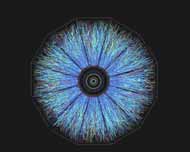 For a brief instant, it appears, scientists at Brookhaven National Laboratory on Long Island recently discovered a law of nature had been broken. For the tiniest fraction of a second at the Relativistic Heavy Ion Collider (RHIC), a team of about a dozen particle physicists created a symmetry-breaking bubble of space where parity no longer existed. When the gold nuclei, travelling at 99.999% of the speed of light, smashed together, the resulting plasma was so energetic that a tiny cube of it with sides measuring about ¼ of the width of a human hair would contain enough energy to power the entire US for a year. It was the equally gargantuan magnetic field produced by the plasma — the strongest ever created — that alerted physicists that one of nature's laws might have been broken. The results were so unexpected that they waited more than a year to publish them, spending that time searching for alternative explanations. If the effect proves real, it could help with understanding a similar asymmetry leading to one of physics' most fundamental mysteries — why is the universe dominated by ordinary matter when equal amounts of matter and antimatter must have been created by the Big Bang? Via the New Shelton wet/dry. Iraq Photo of the Day This photo disturbs me because it illustrates the way innocent people are swept up into the maelstrom of conflict. What lessons are Iraqi and Afghani children
learning from this?  China's Three Gorges dam faces its biggest test this season as rainstorms swell upstream water levels. Flood control is one of the major objectives of the 16-million-tonne concrete barrier, which was pushed through by the government despite concerns about the environmental and social impact. Torrential downpours, which claimed at least 146 lives in July, have created the most serious challenge since the world's biggest hydropower plant was completed 2 years ago. The peak flow in the reservoir reached 70,000 cubic metres per second. Hydro engineers sluiced water out of the reservoir at an accelerated rate to make space for the downpour. Earlier this year, site engineers acknowledged that landslides and water pollution in the reservoir were more severe than anticipated. 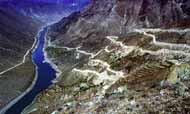 Zhang Boting, deputy general secretary of the China Society for Hydropower Engineering, says that a massive dam on the great bend of the Yarlung Tsangpo River would benefit the world, despite the likely concerns of downstream nations, India and Bangladesh, which access water and power from the river. A 38-gigawatt hydropower plant is under consideration that would be more than half as big again as the Three Gorges dam, with a capacity nearly half as large as the UK's national grid. The Tsangpo-Brahmaputra — until recently considered the last great undammed river in Tibet — will be the next focus of China's efforts to increase the nation's power supply. Along with the Congo river at the Inga falls, this is considered one of the two greatest concentrations of river energy on Earth, but it was long thought impossible to access because of the rugged, high-altitude terrain and the risk of water-related conflict with neighbouring countries. But China has overcome many engineering obstacles with the construction of the railway to Tibet, and its growing energy demands are spurring exploration of ever more remote areas. However, environmental activists warn against building such a huge project in a seismically active and ecologically fragile area. The Times of India has reported that China has assured India that such a project is in fact NOT planned. Time will tell. This mile-high flat-topped mountain in Venezuela is called a tepui. It is punctuated with hundreds of free-flowing water falls and seemingly symbiotic cotton-candy-like clouds. Otherwise known as Mount Roraima, this 9,219-foot structure is ensconced amid emerald green tropical plants and rainbow bromeliads that peek out from behind jutting yet sculpturally æsthetic quartz sandstone. Exposed to erosion by rain, wind, algae, and fungi, the tepuis have taken on bizarre shapes. The twisted rock formations on their surface resemble a lunar landscape, conjuring up images of ancient civilisations, dinosaurs fossilised with time, or of strange forces at work. Canaima, the name of the park, means "spirit of evil" in the language of the Pemon, the principal native group living in the region. Tepuis are true islands in time, some of the few places on Earth where the flora and fauna have grown for eons without outside influence. Plants and animals have evolved to suit the inhospitable climate of the often soilless, windswept plateaux pounded by torrential downpours. Notorious are the "puri-puri" insects, which, despite their endearing name, may well be the planet's most bloodthirsty creatures. Nearly invisible to the eye, they are known to have driven the unprepared visitor insane. 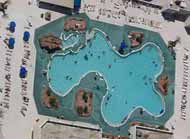 Each year, millions of people visit public swimming pools and water parks. Disinfection of recreational pools is critical to prevent outbreaks of infectious disease. Pool water represents an extreme case of disinfection that differs from the disinfection of drinking water as pools are continuously exposed to disinfectants. All sources of water possess organic matter that comes from decaying leaves, microbes and other dead life forms. In addition to organic matter and disinfectants, pool waters contain sweat, hair, skin, urine, and consumer products such as cosmetics and sunscreens from swimmers. These consumer products are often nitrogen-rich, causing concern that they may contribute to the generation of nitrogenous disinfection by-products. When mixed with disinfectants, these products may become chemically modified, converting into more toxic agents that can mutate genes, induce birth defects, accelerate the ageing process, cause respiratory ailments, and even induce cancer after long-term exposures. Test results show that all disinfected pool samples exhibit more genomic-DNA-damaging ingredients than tap water. Data suggest that brominating agents should be avoided as disinfectants of recreational pool water - the best method of treatment is a combination of UV and chlorine (as compared to chlorination alone). Swimmers can help by showering before entering the water and by never urinating in the pool.  Chemical-free, electronic-oxidation water sanitation offers an alternative to chlorine, salt chlorination and ozone, though it typically relies on metals which can be toxic to aquatic life in minute quantities. Oxygen pools are produced via the electronic oxidation of the water molecule itself to generate the natural oxidisers hydroxyl (HO), atomic oxygen (O), hydrogen peroxide (H2O2) and molecular oxygen (O2). All of these have a higher oxidation reduction potential value than chlorine alone. Electronic oxidation generates more oxidisers in under 1 minute than salt, chlorine, ozone or UV generate in an hour. Electronic oxidation combined with low levels of copper ionisation (0.5 parts per million) provides a very effective pool sanitation that is 100% chlorine free — but it is not environmentally advantageous as the metals are far more persistent than chlorine and are toxic to aquatic life in the parts per billion range. 

One final pool-cleaning alternative: Like a giant strainer dropped into the river, + Pool filters bacteria, pollutants and odours through concentric layers of water-cleansing materials integrated directly into the pool walls, leaving only safe and swimmable water that meets the US Centre for Disease Control and the Environmental Protection Authority's standards of quality. It has an exterior perforated metal screen; a 100-micron polyester filter textile to filter large parasites; a 15-micron polyester filter for medium parasites; iodine-impregnated beads to kill bacteria, viruses and parasites; a void chamber to continue the iodine process; granulated active carbon to remove the smell of iodine and kill any remaining parasites; and an interior perforated metal screen. The right-hand photo is an aerial view of Battery Park City where one of the floating pools is potentially to be placed. The star at the bottom marks where I live when I'm in New York (which I will be doing again in another month, and I'm hoping the weather has turned cooler). How warm is river water? I suspect I would find it not warm enough about 350 days out of the year. No real surprises there. 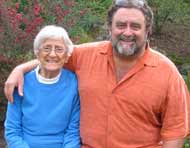 James Fallon has been a neuroscientist for 20 years, studying brains of psychopaths. The orbital cortex is involved with ethical behaviour, moral decision-making and impulse control. "People with low activity there are either free-wheeling types or sociopaths," he says. The orbital cortex brakes another part of the brain, the amygdala (involved with aggression and appetites). In some people, the orbital cortex appears inactive — perhaps the person had a brain injury or was just born that way. "Then what takes over?" he asks. "The area of the brain driving your id-type behaviours: rage, violence, eating, sex, drinking." Previously, Fallon had persuaded 10 close relatives to have a PET brain scan and give a blood sample as part of a project to test his family's risk for Alzheimer's. After learning several of his ancestors had committed murder and other acts of violence, he examined those images, comparing them with psychopaths' brains, looking for genetic traces to see what his ancestors' problems may have been. His wife's scan was normal, mother: normal, siblings: normal, children: normal. "And I looked at my own and saw something disturbing I didn't talk about," he says. His own orbital cortex appeared inactive. "I look just like one of those killers." Along with brain scans, he also tested his family's DNA for genes associated with violence, looking at 12 related genes, zeroing in on the MAO-A gene (monoamine oxidase A), target of considerable research (known as the "warrior gene" because it regulates serotonin in the brain which affects mood — think Prozac; many scientists believe a certain version blocks the brain's response to serotonin's calming effects). Fallon calls up another slide on his computer — a list of family members' names and genotyping results. Everyone has the low-aggression variant of the MAO-A gene, except one. "You see that? I'm 100%. I have the risky pattern," he says, then pauses. "In a sense, I'm a born killer." Lucky for him, you need a 3rd ingredient - abuse or violence in childhood. He is shown with his beloved mother, Jenny.  Because an accent makes a person harder to understand, listeners are less likely to believe that what the person says is truthful, researchers found. The problem of credibility increases with the severity of the accent. The results have implications for how people perceive non-native speakers of a language, particularly as mobility increases in the modern world, causing millions of people to be non-native speakers of a language they must use daily. Accent might reduce the credibility of non-native job seekers, eyewitnesses, reporters, or of people taking calls in foreign call centres. Accent is one of the factors that influences people's perception of foreigners in society. However, its insidious impact on credibility had not been previously known. Forewarned is forearmed! (I hope.)  Truly Enduring: Ralph and Phyllis Tarrant (aged 107 and 101 respectively) have been married for 77 years. Phyllis was 16 when she met Ralph, a 22-year-old steelworker. For 3 years they were "simply friends." Once they began dating, it was another 5 years before they married. Their wedding cost £100, a princely sum for which they had saved for years. Just as the couple were settling into married family life, World War II broke out and Ralph was called up for service. The couple were apart for 5 years, until late 1945 when Ralph returned home. He then worked up to 90 hours per week trying to get caught up financially — but they managed to hold things together. Ralph credits their longevity to being healthy and active and having lots of cheese and onion sandwiches — plus a little glass of whisky every evening.  Also Enduring: Jack Sharpe was sent to Singapore just a few days before the Japanese invasion there and was captured by the Japanese. He was sent to Thailand to work on the notorious Burma Railway, then sent back to the Outram jail in Singapore; almost no one survived it for 2 years, but Jack did. It was from this infamous prison that Sharpe was liberated in August 1945 with the dubious distinction of being its longest survivor. During his captivity, plagued by scurvy, dysentery and scabs, Sharpe saw his weight decreased from 70 kilograms to less than 25 kilograms. In September 1945, the world was stunned by the publication of Sharpe’s skeletal figure cheerfully smiling from the end of his bed. The photo told the story of appalling Japanese treatment of their prisoners, and also the indomitable spirit of Jack Sharpe — who eventually lived to be 88. The Corn Is as High As an Elephant's Eye
Unfortunately, none of these photos was accompanied by any identifiable photographer's name except the middle photo was taken by Andrea & Lidia. Just Put It in My Trunk
"Snail", "Little Trunk", and "Bali Artist". Likewise, none of these photos was accompanied by any identifiable photographer's name. Heavy. Weight.
The last photo is called "Itch". The first photo was apparently taken by someone named Jorge. Special Elephants
The middle photo is called "How to Train Your Elephant" and is a collage by Paul @ 35 photo.ru. In the last photo, a sheep has adopted a motherless elephant. Tiny Elephants (but getting bigger fast!)
"Littlest" (Is it alive? If so, did it keep living?), "Boy and Elephant", and "Elephants in the Bush".  If you live in the US (and, possibly, most other places in the world as I know this also applies to NZ) your taxes are going UP in the new year. (Surprise!) Through the end of this year in the US, the federal estate tax rate is zero — thanks to the package of broad-based tax cuts that President Bush pushed through to get the economy going earlier in the decade. But as of midnight on 31 December, the death tax returns — the progressive rate reaches 55% on estates of $1 million or more. (The effect this will have on hospital life-support systems is already a matter of conjecture.) Also, tax brackets move up, capital gains tax jumps up, child tax credit is halved, other Bush tax cuts expire, no more deductions for tuition, and the net widens for the alternative minimum tax. There are a few more, but those seem the worst.  The world's easiest ice cream recipe? I haven't tried this yet (it's winter in NZ after all), but if it's as good as this writer says it is, I think it's worth a shot — IF you like bananas... Potential Partner Attributes
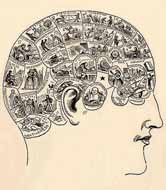
Phrenology is a hypothesis stating that personality traits can be derived from the shape of the skull. It is now considered a pseudoscience. Instead, it's the shape of the brain itself that apparently counts. Psychological "scientists" have found that the size of different parts of people's brains correspond to their personalities; for example, conscientiousness is associated with planning. Conscientious people tend to have a bigger lateral prefrontal cortex, a region of the brain involved in planning and controlling behaviour. People who are more extraverted have a larger medial orbitofrontal cortex — it's just above and behind the eyes. Neurotic people have a tendency to experience negative emotions which are associated with an enlarged area sensitive to threat and punishment. Agreeable people have bigger parts of the brain that allowing an understanding of others' emotions, intentions, and mental states. But is this predictive? Can you look at a child's brain and tell how he or she will turn out? Otherwise, how can you say which came first — the personality trait or the enlarged area of the brain? Perhaps in later years this, too, will join the ranks of the pseudosciences. 
Norman Rockwell, painter of hundreds of Saturday Evening Post covers, was long derided as an artistic dead end because he had so little influence on subsequent celebrity painters. But he was hugely influential on an important cultural figure of the later 20th Century, Steven Spielberg, who mostly paid for the Rockwell museum in Massachusetts. Rockwell operated much like a modern filmmaker, holding auditions for models and having his staff construct sets and assemble props. If he'd been born a couple of generations later, he might well have become a movie director. It turns out that George Lucas owns even more Rockwells than Spielberg does and together they are mounting a Norman Rockwell exhibit at the Smithsonian. Rockwell was a storyteller, and he chose poignant moments in American life to romanticize. He painted the old-time barber shop, the soldier home from war, the weary salesman, sports, popular culture, integration and racial issues, leaving the farm for college, holidays, and more. Striking Uses of Primary Colours
Left: "Colours against Metal" by Kenji (Petronas Twin Towers in Kuala Lumpur, Malaysia); top right: "Black versus Colours;" bottom right: "Rainbow Parrots" (probably photoshopped). Cosmo Theatre Exterior Illusions Restaurant
Because we have 1,400 lights and because we are importing the theatre into a game engine so visitors can walk around
Quantum computation is a distinctively new way of harnessing nature. — David Deutsch
For other updates click "Home" (for the latest) or "Next" (for older) below |
 Animals
Animals Animation
Animation Art of Playing Cards
Art of Playing Cards Drugs
Drugs Education
Education Environment
Environment Flying
Flying History
History Humour
Humour Immigration
Immigration Info/Tech
Info/Tech Intellectual/Entertaining
Intellectual/Entertaining Lifestyles
Lifestyles Men
Men Money/Politics/Law
Money/Politics/Law New Jersey
New Jersey Odds and Oddities
Odds and Oddities Older & Under
Older & Under Photography
Photography Prisons
Prisons Relationships
Relationships Science
Science Social/Cultural
Social/Cultural Terrorism
Terrorism Wellington
Wellington Working
Working Zero Return Investment
Zero Return Investment